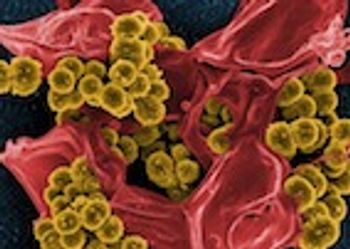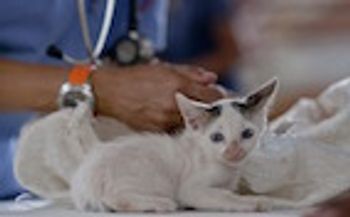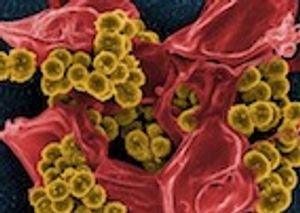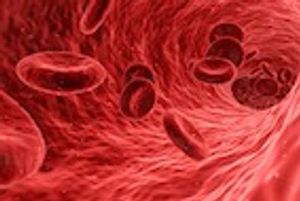
In this billion-dollar industry, veterinarians are a major asset in maintaining the health of bee colonies.

In this billion-dollar industry, veterinarians are a major asset in maintaining the health of bee colonies.

Hope—in the form of chimeric antigen receptor T-cell therapy—is on the horizon for extended remission in dogs with hematologic B-cell malignancies.

Determining the cause of blood in the urine requires an organized method that includes a careful history, urinalysis, and more.

A One Health expert explains why—and how—physicians and veterinarians need to join forces to improve management of zoonotic diseases in people and animals.

The discovery of a new hepatitis B virus in capuchin monkeys could be important in guiding future work to investigate the pathogenesis of HBV infection and potential cures for its chronic infection.

Diagnosis, treatment, and prognosis of this common cancer are more successful with an understanding of the many differences in the disease between dogs and cats.

When veterinarians are presented with an invertebrate animal, what they need most is an understanding of the husbandry needs and behaviors of that particular species.

The increasing number of chicken owners in the United States has heightened the risk of bacterial zoonoses and foodborne illnesses. Educating clients is the key to prevention.

Bacterial strains that have become resistant to antibiotics—particularly gram-positive organisms such as Staphylococcus—pose a growing threat to both people and animals.

Researchers are discovering increasing ways in which pet ownership is good for human health and quality of life.

Practitioners who treat small mammals should understand the clinical variants, presentation, and staging and classification of this prevalent disease.

Veterinarians who suspect clients of mistreating their pets should tread lightly, gather and document evidence carefully, and collaborate with law enforcement.

Veterinary professionals who keep their work and personal lives separate improve both their health and many aspects of their practice.

Radiographs are integral to the diagnosis of many conditions in pet birds, but obtaining high-quality images can be difficult in these species.

A coordinated effort in 2016 helped to stave off a potential pandemic and reinforced the precautions required for veterinarians who may become involved with an avian flu outbreak.

Early recognition and diagnosis, appropriate staging, and timely treatment elicit the best prognosis for these patients.

To provide effective care, veterinarians must be knowledgeable about middle-ear anatomy and physiology, including key differences between species.

Veterinarians should always consider basic disease principles and apply deductive logic to interpret pathologic changes throughout the diagnostic process.

Clostridium difficile infection occurs in many species and is the most common cause of health care–associated infections in many countries. Might this infection have zoonotic potential?

Improving quality of life for older dogs with behavioral problems entails first identifying the root cause of the problem and then taking a multimodal approach to treatment.

Presenting at the 2017 AVMA Convention, Heidi Reuss-Lamky discussed the ways in which capnography provides important feedback about the severity of a patient’s condition and how patients respond to treatment.

Veterinary professionals who are able to keep their work and personal lives separate improve not only their health but also many aspects of practice.

Although special considerations must be taken when operating on very young puppies and kittens, experts say the benefits of early-age gonadectomy outweigh the risks. Here’s why.

Diversity in veterinary medicine extends well beyond gender, ethnicity and race and sexual orientation — and often impedes professional collaboration and clinical outcomes.

Translational research studies in pets can serve as a useful bridge between traditional animal models and human clinical trials.

Much progress has been made in eradicating this deadly disease, but roadblocks remain, experts say.

Adverse drug events are inevitable in veterinary patients, and it’s imperative for veterinarians to know how to identify them and understand the importance of reporting them.

Diagnosis and treatment of Lyme disease remain equally controversial in dogs and people. Here, infectious disease specialists offer insight and perspective on this confounding disease.

A new investigational vaccine has shown promise in protecting cattle from respiratory syncytial virus infection, according to a recent study.

Published: November 16th 2017 | Updated:

Published: November 17th 2017 | Updated:

Published: November 23rd 2017 | Updated:

Published: June 19th 2018 | Updated:

Published: July 14th 2018 | Updated:

Published: July 20th 2018 | Updated: